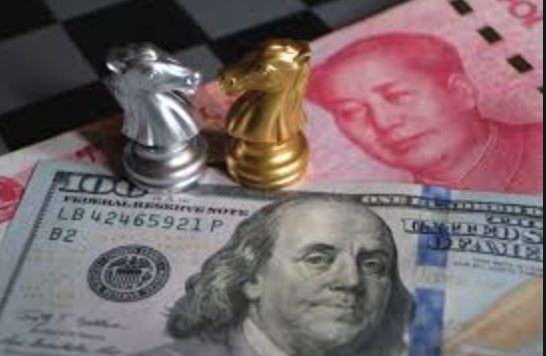The China Trade War: The First Phase Agreement
November 13, 2019

In the game of business, there are two categories of players: the buyers and the sellers. When negotiating contract terms, the buyers have the upper hand and the sellers cooperate for obvious reasons – they want to close the sale.
Most of the time, buyers are well prepared and know exactly what they want, how they want it and when they want it. Negotiations usually deal with details about these essential elements: Pricing and payment terms; Quality and Delivery.
At the end of the process, a purchase order, a contract or an agreement locks down the terms that were agreed upon, using clear and unambiguous language to bind both parties.
This process is the same everywhere. When the buyer is in the USA, and the seller is in China, negotiations are a bit more challenging because of distance, culture and language, but the process is still straight-forward and everyone understands how it works.
Once a contract is in place, both parties can focus their energies on execution.
The parallel in China’s trade dispute with the US is that the US government is, in effect, the buyer and the PRC is the supplier. As such, during the process of negotiation, the US dictates the three essential elements of its “contract” with China: the price (i.e. tariffs); the quality (i.e. Behavioral requirements, such as IP) and Delivery (i.e. when the deal should be complete). A deal cannot be complete unless the above 3 elements are finalized.
This particular trade deal has not gone well. The buyer has adopted a tough, coercive attitude, but seems unclear about what it is he is buying, and China has proven to be a tough negotiator. As a result, contract terms kept changing; pricing went up; the quality fluctuated and, most of all, there was no delivery. The whole thing is in a flux.
The most unsettling part is that deadlines happily come and go. We were told a deal would be done by March. Then it got postponed – “negotiations will resume in September.” We were then assured a contract would be reached “definitely in October,” but here we are in November and there is still no agreement. Trump, in fact still says: “I haven’t agreed to anything…they want to make a deal a lot more than I do.”
Maybe they do, but Trump wants to make a deal too. He needs the US economy to stop slowing down, and he now knows how much tariffs are hurting. Americans paid $7 billion in tariffs in September, and while this is a historical record, it is not something to brag about.
Negotiations have been complicated and slow, partially because numerous non-trade issues have been thrown into the mix. The good news is that, to cut through the complexity, negotiators have agreed to focus on a “first phase” agreement. This is a good solution. Breaking the agreement down into smaller parts allows both parties to lock in first what can be agreed on, and defer the more contentious issues to later. Progress.
We don’t know exactly what will be included in this first phase, but the main bone of contention is the rolling back of tariffs. The US wants to keep the tariffs for leverage for “the other phases” and China will not agree to any deal unless the tariffs are rolled back. In my opinion, you can count on the following:
- Cancellation of promised new tariffs. The spur for closing the deal is to avoid the final tranche of tariffs for about 156 billion of mostly consumer goods (i.e. Electronic and toys) planned for Dec 15. I expect this will be postponed or canceled.
- Roll-back on previous tariffs for many categories. No rollback is a deal breaker so this must happen. It probably will not be on all categories, and may not reach pre-dispute levels (yet), but there will be a roll-back, and it will involve:
- The first 3 tranches of tariffs set in 2018, for about $250 billion all of which are now at the 25% level. (These were mostly for machinery and raw materials, only indirectly affecting consumers.)
- The 15% tariff on $111 billion of (mostly) consumer goods imposed last September.
- An increase of China purchases of US farm goods. China will roll back their tariffs too and they will buy more US goods. That is very clear.
A time and a place: So we are basically ready to go except for the ceremony. This big deal delivers maximum political mileage for the main guys, Trump and Xi, so they must sign it in person. And coordinating with them is another delaying factor: they are busy and fussy people. The agreement was first going to be signed in Chile this month, but that did not work out. So both parties are trying to figure another time and another place, convenient for both parties.
Suddenly the China trade war is no longer boring, it has regained its first page status in the media. But what will the agreement mean for the world, for the importers, the retailers, the consumers, the various stock markets, all of which have nervously embraced the Uncertainty Monster?
Once the deal is done the stock markets will get a lift, the global economy will stabilize and importers will tentatively return to “business as usual.”
Buyers being buyers, caution will prevail. Many will take time to digest the lessons learned during the last 2 years. Once burned, twice shy, uncertainty will linger. To get clarity they will wait for a deal to be signed, and even after an agreement, some will wonder if things might get undone. It will take time for confidence to return.
On the other hand, many China importers are adventurers and some have already figured how to take advantage of all this uncertainty.
In the game of business, the buyer is king, the key is clear purpose, and timing is everything.
◊◊◊◊◊
